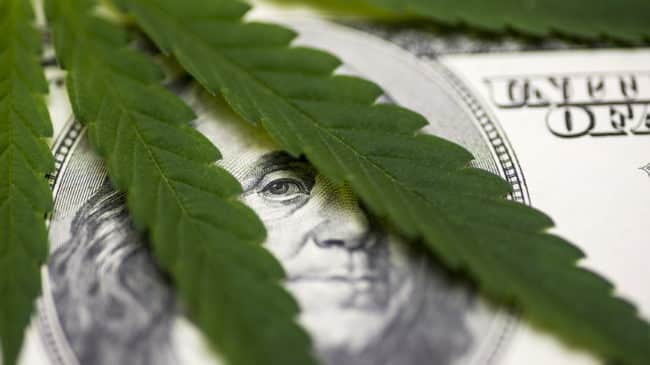Many view marijuana legalization as a potential windfall for state budgets. Accordingly, states have sought to identify tax rates, licensing rates and other fees that extract the maximum revenue from the industry to fund unrelated government projects ranging from education to infrastructure improvement. But by raising the price of marijuana for consumers, these costs undermine a major competing purpose of legalization: elimination of the black market.
As demonstrated by alcohol and cigarettes, excessive taxation can influence consumers’ decisions to patronize the black market. A key limitation to measuring the effectiveness of various tax regimes is the difficulty of estimating the volume of transactions that flee to the black market in legal states. Notably, the literature on consumer responsiveness to price in both legal and illegal markets indicates consumers in legal markets tend to be more price-sensitive than consumers in illegal markets. This observation carries important implications for the appropriate level of taxation.
Black markets will continue to operate so long as high taxes in the legal market create a large price disparity. Such high tax rates may not only sustain illicit market suppliers but also result in few tax receipts as fewer and fewer transactions take place on the legal market. A central question is the degree to which marijuana excise taxes approach or exceed the risk premium necessary to compensate producers and consumers for their decision to participate in black market transactions. Policymakers looking to minimize illicit markets must determine the level of taxation that would discourage consumers and producers alike from seeking black market alternatives, while still ensuring that tax rates cover the costs of regulatory enforcement.
Standard regression analyses cannot determine this tax rate with any certainty because data regarding the experience of existing legal marijuana markets are not yet sufficiently voluminous to produce statistically significant results. In addition, estimating the size of the black market is a highly speculative exercise, and so any data source used to approximate black market transaction volume may be spurious. Instead, we consider here a cost-of-production model to examine the supply-side effects of taxation.
Exclusive of the costs associated with regulatory compliance and taxes, black market and legal market producers may face substantially similar production costs. A cost-of-production model can be used to estimate the supply-side effects of taxation, informing the debate over the appropriate rates of marijuana taxation. Table ES1 in the full study provides cost estimates for each stage of producing marijuana flower in a 10,000 square-foot industrial warehouse as both an illegal and licensed operator.
Beyond these similar costs of production for licit and illicit marijuana, both consumers and producers of black-market marijuana assume risk by engaging in black market transactions—they could be arrested, robbed by their counter-party, physically harmed, delivered tainted or adulterated products, or any number of possible negative outcomes.
At least theoretically then, both consumers and producers should seek a risk premium for engaging in a black-market transaction, particularly when there is an alternative legal market for similar products. These risk premiums should be expected to have different effects for consumers and producers.
Consumers should expect to receive additional value for their money, which is to say they seek cheaper prices on the black market.
Producers, on the other hand, should expect additional compensation in the form of a higher profit margin. In the absence of an alternative legal market, these countervailing tendencies likely negate each other to at least some degree.
However, when a legal market exists, such as in those states that have passed legalization statutes, producers face a trade-off between seeking a risk premium for participating in the black market or facing higher tax expense and regulatory costs in the legal market. All else equal, a producer should be expected to remain in the black market if their profit margin exceeds the profit margin that would be available in the legal market plus their required risk premium for participating in the black market. By contrast, a consumer should be expected to remain in the black market only if the cost savings available from lower prices on that market exceed the consumer’s risk premium for participating in it.
Individuals have different levels of risk tolerance, which means the premiums required by producers and consumers to compensate for risky activity are subjective and vary even across similarly situated individuals. Further, levels of risk tolerance are not directly observable, so a dynamic, statistical modeling of risk tolerance is not possible. Therefore, we examine the tangible costs that marijuana producers likely face in both legal and illegal markets. We find production costs are higher in legal markets and attempt to quantify the effects of both regulatory compliance and taxation. Producers will select to operate in black markets if these costs combined exceed the risk premium sought by each producer. Similarly, consumers will seek illegal marijuana if the cost structure allows black market producers to sell at lower prices than are available on the legal market.
In determining a rate of marijuana taxation, policymakers should account for consumer choice to participate in the black market and ensure the tax environment induces consumers to transition to the legal market. Given that black markets will continue to operate in an atmosphere of high taxes on the legal market, policymakers should keep the legal market vibrant by basing marijuana tax rates on as accurate a forecast as possible of the state’s cost of regulating the legal marijuana industry, rather than solely attempting to maximize revenue.
As states transition from illegal to legal marijuana markets, they face a choice of possible tax regimes for the newly legal industry. Amassing tax revenue expressly motivates many lawmakers and voters to consider legalizing marijuana, but marijuana consumers can respond by purchasing legal marijuana subject to these taxes or purchasing other goods— including illegal marijuana that is not subject to taxation. This choice highlights a potentially competing objective of legalization: the eradication of black markets. Marijuana remains widely available through the black market supply chains that have supplied this product with increasing sophistication since the passage of the federal Marijuana Tax Act in 1937. Tax rates and regulatory restrictions that elevate the price of legal marijuana significantly above the prices that prevail on black markets may both prolong the presence of black market suppliers and reduce government tax receipts as consumers flee to illegal marijuana markets.
This study examines these competing factors to forge a new, more effective model for determining marijuana tax rates. Economic theory suggests that tax structures should be simple, transparent and non-distortive. Generally, this indicates that a simple excise tax at the point of final sale may be the best method for taxing marijuana. We further review the existing research on consumer responsiveness to changes in price for other goods subject to special excise taxation like alcohol and cigarettes and then marijuana specifically. A key limitation to measuring the effectiveness of various tax regimes is the difficulty of estimating the volume of transactions that flee to the black market in legal states, but the literature on consumer responsiveness to price in both legal and illegal markets indicates consumers on legal markets tend to be more price-sensitive than consumers on illegal markets. This observation carries important implications for the appropriate level of taxation.
We conclude with a cost-of-production model to estimate the supply-side effects of taxation. Exclusive of costs associated with regulatory compliance, black-market producers may face substantially similar production costs, and so a key question is the degree to which marijuana excise taxes approach or exceed the risk premium necessary to compensate producers and consumers for their decision to participate in black market transactions. This supply-side analysis should inform the debate over the appropriate rates of marijuana taxation.
Marijuana Taxation and Black Market Crowd-Out
Infographic: Marijuana Taxes and Black Market Crowd-Out


